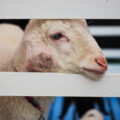Unveiling the sacred: Animals across religious traditions
Unveiling the sacred: Animals across religious traditions
In religious stories, animals are more than characters; they become symbols and spiritual guides. Let’s explore this special connection.
Animals in religious stories
The deep connection between humans and animals is meaningful in religious stories from different traditions. Animals go beyond symbols, becoming essential elements in sacred tales across various beliefs.[1] [2]
Symbolic messengers
The idea of animals as symbolic messengers is a recurring theme in various religious traditions. These creatures go beyond their physical presence to communicate moral messages and represent virtues. In Hinduism, for example, the compassionate elephant serves as a powerful symbol of righteousness.[3]
In Hindu thought, the elephant, particularly associated with the deity Ganesha, goes beyond being a mere symbol. It becomes a living embodiment of virtue, representing righteousness and ethical conduct. The symbolism extends beyond the surface, delving into a deeper connection between the animal kingdom and the moral fabric that guides human ethics.[4] [5]
The compassionate elephant acts as a bridge between the earthly realm and spiritual values. It symbolises a harmonious relationship between humans and the natural world, emphasising the interconnectedness of all living beings. Animals, like the compassionate elephant, play a crucial role in conveying moral messages across cultural and religious boundaries, prompting deeper reflections on ethical principles. Their profound role extends beyond symbolism, encouraging contemplation on ethical principles that govern human behaviour.[6]
Sacred roles: animals in Ancient Egypt and Islam
In diverse cultures and religions, animals frequently hold sacred roles, symbolising the connection between the earthly and divine realms. Take ancient Egypt, for instance, where cats were not just companions but revered as temple guardians, embodying a spiritual link between the earthly and divine. Their watchful eyes and graceful presence went beyond mere protection, signifying them as spiritual sentinels dedicated to upholding the sanctity of the temples they guarded.[7]
Transitioning to Islamic teachings, exploring Quranic examples sheds light on the ethical treatment of animals. An impactful story featuring a sheep expressing grievances about mistreatment serves as a poignant reminder within Islam. This narrative encourages believers to reflect on their responsibilities and underscores the importance of compassion and ethical stewardship toward animals.[8]
Mythical coexistence
Mythical creatures from diverse traditions often carry profound symbolic meanings, transcending folklore to convey universal themes. In the Greek myth of the Phoenix, a majestic bird takes centre stage, symbolising renewal through cyclical rebirth. Rising from its own ashes, the Phoenix represents the cyclical nature of life, death, and rebirth. This enduring myth prompts contemplation on the harmonious relationship between mythical beings and the natural order, offering timeless insights into the interconnectedness of life, transformation, and the perpetual cycles of existence.[9]
The Phoenix’s symbolism underscores the idea that, even in moments of destruction, there exists the potential for regeneration and renewal. Its cyclical rebirth serves as a powerful metaphor, encouraging reflection on the transformative aspects of life’s challenges. The Greek myth, like others featuring mythical creatures, invites contemplation on profound and enduring themes that transcend cultural and temporal boundaries, enriching our understanding of the interconnected tapestry of existence.[10]
Modern dilemmas
In today’s world, religious communities confront dilemmas related to animal rights, notably concerning traditional practices like the use of animal products in religious rituals. These long-standing customs, deeply rooted in religious traditions, face heightened scrutiny due to ethical concerns surrounding animal welfare and environmental sustainability. The ongoing discourse between tradition and progress demands careful examination of how these practices align with evolving ethical standards, urging religious communities to seek nuanced solutions that respect both their profound traditions and contemporary ethical considerations.[11] [12]
The role of animals in shaping cultural and spiritual values
In synthesising the pivotal role of animals in shaping societal values across diverse religious landscapes, it becomes evident that these creatures hold profound significance within the cultural and spiritual fabric of humanity. Advocating for a harmonious coexistence between religious principles and contemporary ethical considerations is paramount. Recognising the interconnectedness between human responsibilities, spiritual beliefs, and the welfare of all living beings fosters a holistic approach to harmonising diverse perspectives on animals within our societies.
Our team of analysts conducts research on topics relating to religion and society. Find out their relationships on the EARS Dashboard.
Sources
[1] Eva und die Schlange – Tiere in den Religionen
[3] Tiergötter und Götterboten
[5] Ganesha – die Legende des Elefantengottes
[6] Ganesha – die Legende des Elefantengottes
[7] Tiere in den Religionen (Teil 2): Hinduismus und Islam
[8] Tiere in den Religionen (Teil 2): Hinduismus und Islam
[10] Phönix – Symbol und Bedeutung des Mythos
[11] Tiere als Mitgeschöpfe – Tierethik aus christlicher Sicht
[12] Religion, Theologie und GewaltLeiden Tiere unter dem Christentum?






